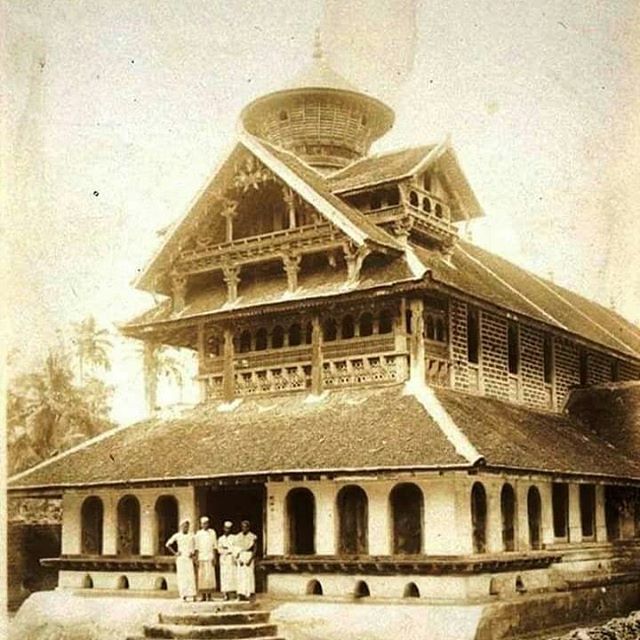
In the heart of Thalassery stands the 200-year-old Odathil Palli and the Garden Mosque. The site of the Odathil Palli used to be a sugarcane garden of the Dutch. It changed hands to the British-owned East India Company. Moosakaka, a Muslim Keralite, was the contractor of the East India Company. Moosakaka hailed from the Keyi family of Thalassery, who were among the prominent traders of the time. Moosakaka was considered to be very honest and trustworthy. Hence, the company wanted to reward him for his loyalty. As per his request, he was given the Dutch sugar garden. Muskoka bought this land for a small price, as he did not want it free. He constructed a beautiful mosque in Thalassery in the 'Karimbin-odam' (sugarcane plantation) that formerly belonged to the Dutch, occupied by the British. Odam means 'garden' in Malayalam. Since it was constructed in Odam, the mosque came to be called Odathil Palli, meaning 'mosque in Odam'. The mosque had copper plate roofing and a golden dome in the minor and shared the scenic features as noted in the Brahmanical tradition. There was opposition in laying the dome – a privilege enjoyed by the temples – so Zamorin gave speed permission to lay the domes and the minaret. It highlights the communal harmony that prevailed in those days and the policy of enlightened toleration followed by the Kerala rulers. All Muslims can offer prayers. In Kabaristan (graveyard adjacent to the mosque), only Keys' are buried.